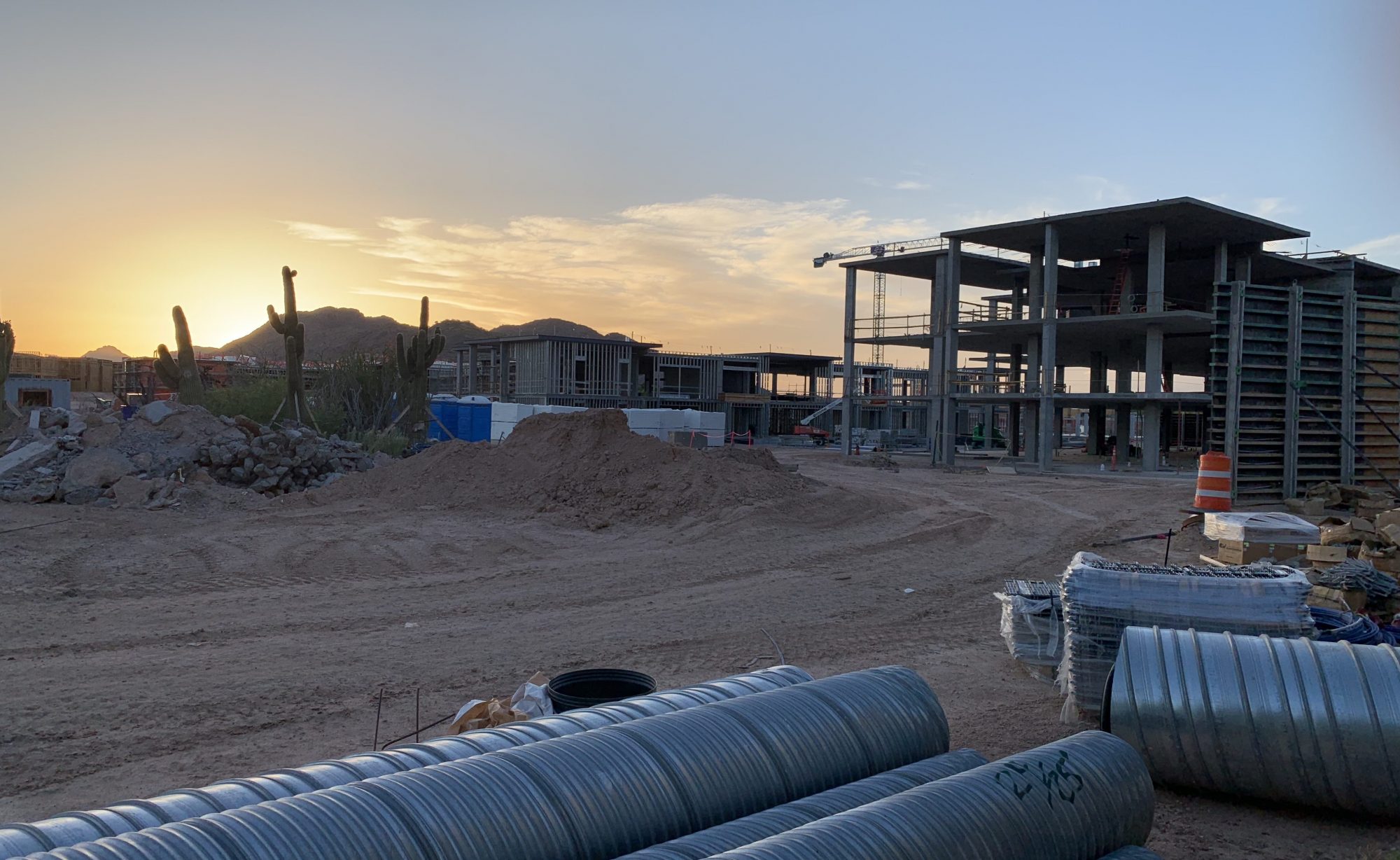 The Arizona Court of Appeals recently issued an opinion in Double AA Builders, Ltd. v. Preferred Contractors Insurance Company, LLC., No. 1 CA-CV 15-0375, which addresses several key construction-related commercial general liability insurance policy (“CGL”) provisions. The court ultimately held that the subject CGL policy did not provide the general contractor (who was an additional insured) more and/or different coverage than the subcontractor (who was the named insured). As a result, the court found that the General Contractor was not insured for the loss at issue. But in reaching its decision, the court examined the concepts of “additional insureds,” ” your work exclusions,” and “subcontractor exceptions” in connection with CGL policies. For this reason, Double AA Builders is a particularly interesting case.
The Arizona Court of Appeals recently issued an opinion in Double AA Builders, Ltd. v. Preferred Contractors Insurance Company, LLC., No. 1 CA-CV 15-0375, which addresses several key construction-related commercial general liability insurance policy (“CGL”) provisions. The court ultimately held that the subject CGL policy did not provide the general contractor (who was an additional insured) more and/or different coverage than the subcontractor (who was the named insured). As a result, the court found that the General Contractor was not insured for the loss at issue. But in reaching its decision, the court examined the concepts of “additional insureds,” ” your work exclusions,” and “subcontractor exceptions” in connection with CGL policies. For this reason, Double AA Builders is a particularly interesting case.
Background
The dispute in Double AA Builders arose from the construction of a new movie theater complex. Double AA Builders, Ltd. (“Double AA”) was hired as the general contractor on the project, and subsequently subcontracted with Anchor Roofing, Inc. (“Anchor”) to install a built-up roofing system. While Anchor performed its work, it was covered as the “Named Insured” under a commercial general liability policy issued by Preferred Contractors Insurance Company, LLC (“Preferred”). Double AA was added to the policy as an “Additional Insured.”
After the project was complete, the roofing system began to leak. The leaks caused damage to the work installed by other subcontractors and caused the owner to lose business. Double AA replaced the roofing system at the owner’s request, and subsequently sued Anchor and Preferred for the cost of replacing the roof. Double AA did not, however, sue for the cost of the damage to the other property. Double AA obtained a default judgment against Anchor, and Double AA and Preferred filed cross motions for summary judgment on the issue of Preferred’s liability to Double AA under the policy. The trial court ruled in Double AA’s favor, finding that “coverage was triggered by an ‘occurrence’ and ‘property damage,’ and that a ‘subcontractor exception’ clause removed the claim from the policy’s ‘your work’ exclusion.” Preferred appealed.
Discussion
The Court of Appeals first addressed the policy’s “your work” exclusion, which removed from the scope of coverage “‘property damage’ to ‘your work’ arising out of it or any part of it and include in the ‘products completed operations hazard.'” The court noted that, generally, these exclusions “‘prevent[] liability policies from insuring against an insured’s own faulty workmanship, which is a normal risk associated with operating a business.'” [Quoting 9A Steven Plitt et al., Couch on Insurance § 129:18 (3d ed. 2016 & Supp. Dec. 2016)]. As such, they discourage careless work and prevent CGL policies from operating as performance bonds. The court also noted that Arizona courts have “consistently interpreted [CGL] policy ‘your work’ exclusions to bar coverage for the cost of repairing an insured’s faulty work.”
Given Arizona law and the fact that Double AA sued only for the cost of replacing Anchor’s defective roofing work (and not the damage to the other property), the Court of Appeals held that the subject “your work” exclusion barred Double AA’s recovery, unless the “subcontractor exception” to the exclusion applied. “Put simply,” the court held, “the exclusion applies because the case relates only to Anchor’s defective work.”
The Court of Appeals next turned to the policy’s “subcontractor exception” to the “your work” exclusion. The court held that the policy’s language limited the exception to “damage arising from work ‘performed on your behalf by a subcontractor.'” Moreover, the court found that, under the policy: (1) “your” referred to “parties that qualified as ‘Named Insureds;'” and (2) “Additional Insureds” (like Double AA) were given coextensive, but not greater, coverage than “Named Insured.” Thus, because Anchor was the only “Named Insured” and Anchor performed the defective work itself (and not through a subcontractor), the court held that the “subcontractor exception” did not apply. In short, because the “subcontractor exception” would not have applied to cover Anchor for its defective work, it also could not provide coverage for Double AA. Indeed, the court noted that holding otherwise would lead to an irrational outcome by rendering the “your work exclusion” meaningless and requiring Preferred to accept greater risk with no additional compensation.
Conclusion
In sum, the Court of Appeals held that the subject policy’s “your work” exclusion applied, and the “subcontractor exception” to that exclusion did not apply. The court found the: (1) exclusion applicable because the case only related to Anchor’s defective roofing work; (2) the exception inapplicable because the defective work was performed by Anchor acting as a subcontractor—not by a subcontractor acting on Anchor’s behalf. Accordingly, the court held that the policy did not provide coverage to Double AA for the defective work, and the court reversed “the grant of summary judgment for Double AA and remand[ed] with instructions that the [trial] court enter summary judgment in favor of Preferred.”
